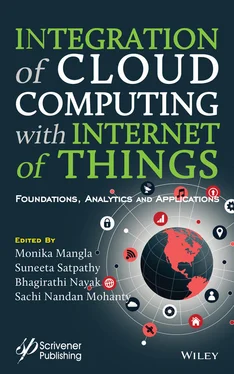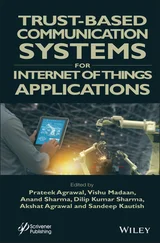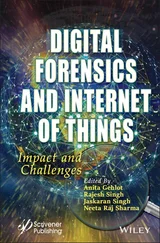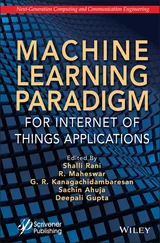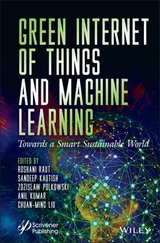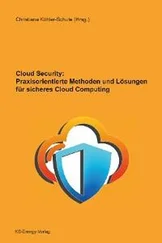One can include new software, hardware, and system upgrade costs in his/her contract.
The expert data is found in the cloud, thus need to hire or pay the expert staff.
Thus, it reduces energy consumption.
Unnecessary time delays can be avoided.
Some of the other benefits that are offered by CC are security, flexibility, insight, quality control, increased collaboration, disaster recovery, competitive edge, loss prevention, sustainability, etc. The major advantages of CC have been shown in Figure 1.4.
The limitations of CC are briefed below.
Privacy agreement: The user in the CC platform requires the desired privacy and service level agreement before the commencement of the services. It delegates certain responsibilities on both the service provider and the user which needs to be adhered to by both the parties.
Security: The protection of data and the security against pilferage, theft, etc. need to be considered beforehand. While it is provided by the service provider in its periphery, the remote users need to weigh the security system before opting for CC. Figure 1.3Softwarebased IoT applications. Figure 1.4The benefits of CC.
Vulnerability: Since each component is easily accessible via the internet, it is likely to be attacked by hackers.
Limited flexibility and control: The uses in CC have limited control over the execution and function of the service provider as per the agreement signed by both parties.
Platform dependencies: The vendor lock-in or implicit dependency creates deep-rooted differences between the user and the service providers. This sometimes poses difficulties for users to migrate to other service providers at will due to additional cost, security, and privacy issues.
Cost: for small businesses or on a small scale, CC cost exceeds the cost due to staffing or hardware procurement.
Types of CC
The commonly employed CC services are briefed below.
Infrastructure as a service (IaS): In this, an external service provider facilitates the user with computer power and disc space via the internet. The users need to have hardware such as CPU, data storage, memory, or network connectivity. Examples of IaS are the Rackspace, Amazon EC2, Windows Azure, etc.
Software as a service (SaS): In this, the user can access the internet-hosted software by browsing. The service provider maintains and controls the software updates and the user has limited control over the configuration settings and the applications. It is mostly suitable for small businesses.
Platform as a service (PaS): It is a crossover between SaS and Ias. In this case, the user rents the operating system, hardware, network capacity, storage, etc. to the service provider. Thus, the user has the desired control over the computing setup, technical aspects, customization, etc. as per his/her need.
1.3.2.2 IoT in Edge Computing (EC)
CC is an efficient mechanism to process the data that reduces at the network edge. New software domains have been developed that are more energy-efficient than CC are the Fog or EC [20, 21]. In EC the computation of the enabling technologies is carried out at the edge of the network. At downstream data, this function is performed using cloud services whereas, at upstream data, the IoT services are carried out.
In EC, the network resources are managed and controlled between the path of cloud data found useful in the case of a smartphone which is considered to be an edge between the body things and the cloud. Similarly, a gateway is an edge between campus things and cloud in green computing, or the cloudlet and the microdata center act as an edge between the cloud and the mobile device. While FC is oriented more towards the infrastructure side, EC is focused on the things-side. Hence, the latter remains an emerging technology at par with CC in the current scenario. The EC requires minimum use of refrigeration and maintenance as it needs a small data center for functioning. Ultimately, the technique remains energy efficient with a reduction in e-waste. The use of EC has reduced the response time to 169 ms as compared to 900 ms required by CC [22]. The hierarchy of EC is shown in Figure 1.5.
EC aims to save bandwidth and to reduce the response time by bringing the data storage and the computation closer to the desired location. It has recently been found to be applied in dealer locators, real-time data aggregators, shopping carts, and insertion engines. It is a computing technology that can deliver nearer to a request zone with low latency. As compared to CC that suits big data analysis, EC performs better in real-time processing of data generated by the users or sensors such as ‘instant data’. EC moves the computation away from data centers towards the edge of the network, thus helps smart things or objects such as network gateways or mobile phones to accomplish the desired services or tasks on behalf of the cloud. On account of this shift, it becomes reliable to facilitate service delivery, content catching, IoT management, and storage with reduced response time and efficient transmission and reception of data.
The advantages of EC are as follows and are shown in Figure 1.6.
A reduction in data volume, as the task is performed at the edge.
It reduces the consequent traffic and traveling distance of data.
Low latency and transmission costs.
It provides computing offloading in real-time applications, such as facial recognition with the low response time. Figure 1.5The hierarchy of EC. Figure 1.6The benefits of EC.
Instead of using the resource-rich machines such as cloudlets in the vicinity of the mobile users in the case of CC, it is better to offload a few of the tasks at the edge node to reduce the execution time.
EC optimizes data-driven and management capabilities by efficient facilitation of data gathering, processing, reporting, etc. very nearer to the end-user as possible.
Privacy and security
The distributed paradigm of EC allows data encryption using different mechanisms, hence provide added security. This is because the data can be transferred among several distributed nodes via the internet before arriving at the cloud. This introduces flexibility in security methods to be adopted, thus Edge nodes may suit resource-constrained devices. An eventual shift from centralized top-down cloud infrastructure to a suitable decentralized Edge model helps better the functioning of the network. Further, the edge data allows the shifting ownership of gathered data from service providers to end-users. On the contrary, CC is more vulnerable since all the data is fed to the cloud analyzer and a single attack can disrupt the entire system. As against it, the EC transfers fewer amounts of data that can be accessible to hackers or interceptors. So it helps industries to tackle local compliance, privacy regulations, and data sovereignty issues.
Scalability
In CC, it is essential to forward the data to a centrally located data center. Thus, the modification or expansion of the dedicated data centers remains expensive. On the other hand, the IoT devices can be deployed at the edge with their data management and processing tools in single implantation without waiting on the coordination efforts of personnel placed at multiple sites.
Reliability
In CC, if a crucial system or component fails, it is difficult to make the service alive. As compared to this, in EC using distributed nodes, if a single node fails or unreachable, it is still workable without interruption. Further, there is every possibility of redundant data in CC that may not be useful or have the same value. Hence spending money on these data is not advisable which leads to EC. It allows the categorization of data for the perspective of management. Focusing only on relevant data reduces the bandwidth requirement, hence cost. It optimizes the data flow to maximize the operating cost. It stores the data temporarily which is sent to the cloud for storage at a later stage that causes redundant overload in clouds.
Читать дальше
